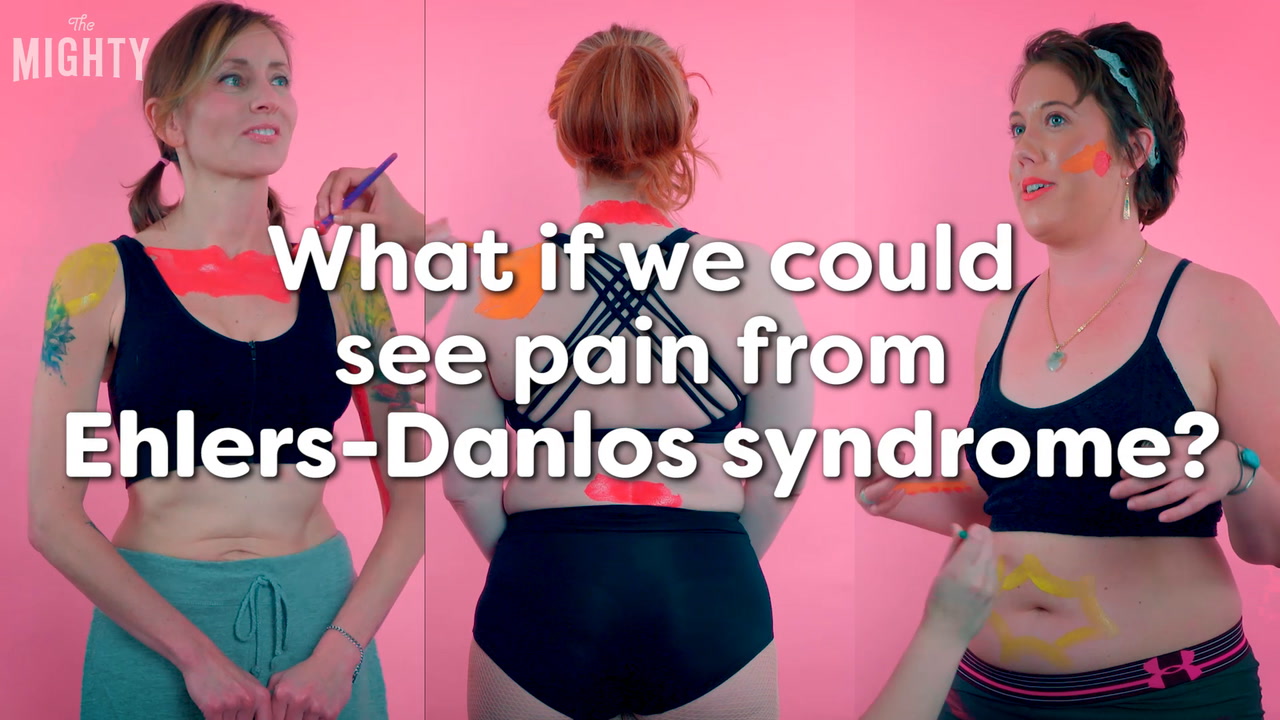3 Ehlers-Danlos syndrome patients get painted to show their pain areas and talk about what chronic pain really means.
Transcription:
Randi: I can look normal and act normal. Seems to be that they think it’s just cool that you’re really bendy.
What if we could see pain from Ehlers-Danlos syndrome?
Ehlers-Danlos syndrome (EDS) is a group of connective tissue disorder that most commonly affect joints and skin.
Randi: I’m living with hypermobile
Crystal: Ehlers-Danlos
Roxanne: syndrome.
Crystal: I experience pain in my joints because of my lax ligaments.
Roxanne: So I had labral tears, repeat tears, even after surgery to repair.
Randi: The joints are not holding my body together so then the muscles have to do work that they’re not supposed to be doing.
Roxanne: I also have other misalignments like my jaw.
Randi: So then they spasm. I also get bone pain.
Crystal: My collagen is made defectively.
Roxanne: I also have pain in my neck.
Randi: I think it’s just part of defective collagen, and then nerve pain.
Crystal: My joints are overly flexible.
Randi: It’s like a typical muscle knot.
Crystal: Sometimes it feels like stabbing.
Roxanne: It feels like I’m stuck like I need to crack or snap myself.
Randi: Burning sort of cramping.
Crystal: Sometimes it feels like squeezing.
Roxanne: It’s kind of a stabbing, stuck.
Randi: A shooting, like a zap, stab.
Crystal: And sometimes I just feel off.
Randi: I don’t use my cane everyday, but I’m walking with a cane and if a friend says, “How are you doing?” and I say, “Good!” But they see the cane and start feeling sorry for me, just to trust that if I say, “I’m good” and I’m here interacting, I’m good.
Crystal: It doesn’t actually go away. I appreciate when people ask, “How are you feeling?” but the answer’s always going to be the same for me.
Roxanne: It can happen to anyone. Maybe your friend all the sudden got this thing and now they aren’t really going and doing the activities that you used to do with them, and that doesn’t necessarily mean that they don’t want to. Accommodate to their pain or whatever’s going on.
Randi: It’s not that I want pity, just an understanding that if I say I can’t make it somewhere, I’m not just being a flake. It’s ‘cause I really, really can’t.
Crystal: It’s not that we have a low tolerance to pain. A lot of us have a very high tolerance to pain. It’s just that our pain is so very high.
Roxanne: There’s many different types of EDS and each person’s experience varies even though it is genetic. I think that’s the big misconception is that if you don’t fit this guideline, you don’t have it,
Randi: It’s really important for people with chronic pain or EDS to listen to themselves, listen to their bodies and if you feel like you need more help, to push for it, to advocate for yourself .
Roxanne: Do your own research. It’s good to know the underlying problem and cause before rushing to have surgeries and thinking that that’s the best solution when maybe it’s not.
Crystal: I think living in pain can be very challenging, but at the same time it can be very beautiful. It can make you pay attention to things that you might not have noticed otherwise, and it makes you appreciate the people who stick around for the good times and the tough times and all the times.
We shouldn’t need to paint our pain
For our EDS to be taken seriously.
Believe us, and be kind.
Visual concept inspired by a post from Elyssa C.

